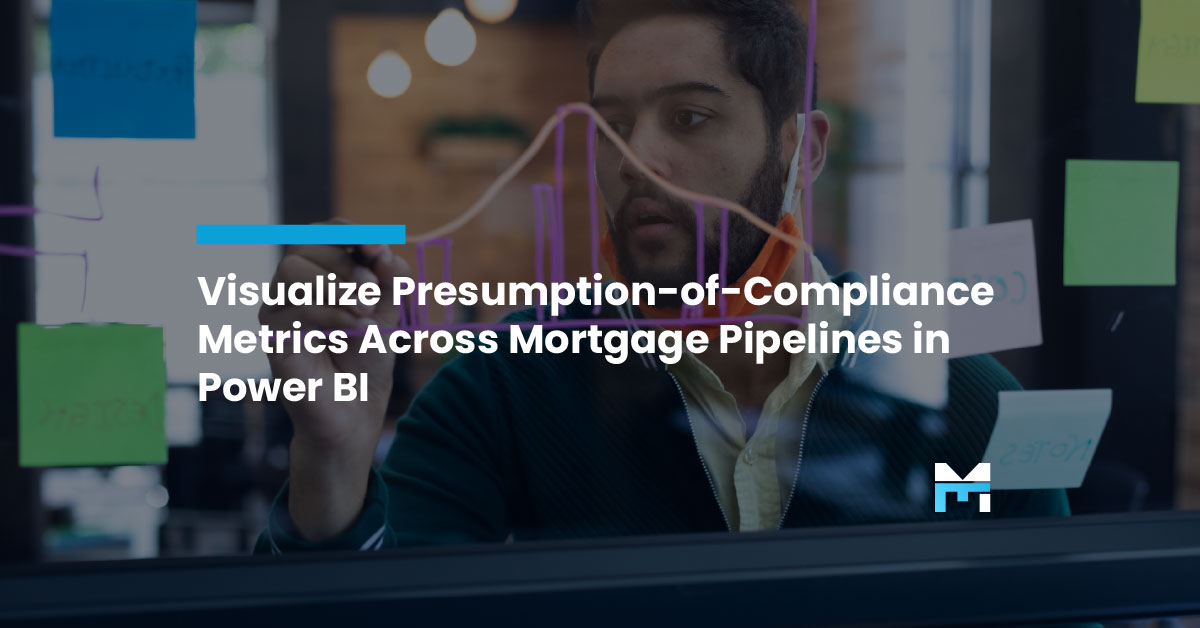5 min read
DLP and the Role of Technology in Modern Mortgage Compliance
Justin Kirsch : Jul 7, 2025 2:00:00 PM

Mortgage lending has always needed constant regulation. After all, every loan processed carries sensitive financial data, so robust security isn't just a brand feature but a legal requirement.
For a mortgage compliance company, managing operations manually is inefficient and risky.
Cutting-edge tools like Data Loss Prevention (DLP) step in here as game-changers. They protect your data, take the pressure off your team, and simplify oversight.
Wondering what these solutions are and how they help your mortgage compliance company? This blog explores the role of compliance and the technologies that facilitate more effective results. Read on!
Table of Contents
|
The Impact of Compliance on Mortgage Lending
Every protocol and practice in mortgage affects operations.
Here's a breakdown of some key compliance aspects that affect mortgage lending:
- Data privacy regulations: Mortgage lenders work with a vast amount of personal and financial information, and with that comes significant responsibility. Laws like GLBA, GDPR, and CCPA set strict rules on how that data is used. Staying compliant means protecting clients and avoiding hefty penalties
- Loan file accuracy and documentation: Mortgage lending requires every document to be thorough and accurate to prevent legal issues and ensure a smooth sales process. Solid documentation keeps your compliance team and your deals on firm ground
- Cybersecurity and data breaches: Cybercriminals are becoming increasingly sophisticated, and the average cost of a data breach is $ 4.88 million. Given that mortgage institutions are high-value targets, a breach can also expose sensitive client data and lead to significant legal consequences. Strong cybersecurity is critical to protect both data and reputation
- Fair lending practices: Fairness isn’t just a principle; it’s the law. Whether you’re assessing creditworthiness or finalizing a loan, you must prove that your processes are unbiased. Regulations like the Equal Credit Opportunity Act (ECOA) and the Home Mortgage Disclosure Act (HMDA) are in place to ensure every borrower receives a fair opportunity, and your data must reflect this
Understanding DLP and How It Drives Mortgage Compliance

A mortgage compliance company manages risks from nearly every direction. Nearly every aspect is closely tied to data.
Data Loss Prevention (DLP) is a technology that safeguards sensitive information from unauthorized access or leaks. It monitors and controls data movement to detect and block potential breaches before they occur.
Here's a deeper look into how DLP works in a mortgage compliance company:
- Monitors email and file transfers: DLP systems inspect emails and attachments to ensure sensitive data isn’t inadvertently or maliciously shared
- Applies real-time policy enforcement: Whether it's blocking data transfers to unapproved domains or encrypting client documents, DLP enforces rules aligned with industry regulations
- Supports audits and investigations: By keeping a log of flagged incidents and responses, DLP simplifies the audit process for compliance officers
- Reduces insider threats: Through content inspection and user behavior analytics, DLP helps detect and mitigate internal risks before data is exposed
DLP is a real-time, automated, accessible approach, making it crucial for any mortgage compliance company to enforce data integrity and confidentiality
How Technology Is Reshaping Mortgage Compliance
Security and legal compliance aren't limited to DLP. But even with one technology in mind, how operations are handled is changing. Embracing new technology now enables a mortgage compliance company to keep one eye, if not both, on long-term patterns and proactively identify gaps.
Let's break down how technology is upgrading your compliance functions:
Automated compliance tasks
Making use of advanced conditional logic and workflows, critical tasks such as regulatory reporting, data classification, and audit trail generation can be automated.
Embracing algorithms here helps a mortgage compliance company minimize clerical errors, drive on-time submissions, and even optimize resources.
Centralized data repositories
Cloud-based systems consolidate information from multiple tools into a single, accessible platform. This enhances data accuracy, improves collaboration across teams, and reduces silos.
Effective knowledge management solutions also give a mortgage compliance company stronger control over documentation and workflows.
Intelligent risk detection
Spotting issues often involves a manual quality check before approval. With artificial intelligence in place, it advances into real-time user behavior and transaction analysis to identify anomalies during the application process.
With cutting-edge fraud detection and intelligent compliance monitoring, every mortgage compliance company can process applications faster and more securely.
Long-term overviews
Connecting information to data interfaces and live dashboards gives compliance officers real-time visibility into statuses, alerts, and performance metrics. This accelerates both decision-making and customer response times.
In mortgage lending, these insights are crucial for staying agile while meeting stringent compliance requirements.
Four Technologies To Remember For Compliance Excellence
Cutting-edge tools are helping lenders not only meet compliance standards but exceed them. Apart from DLP, here are five modern technologies and applications that bring comprehensive change:
1. Identity and access management (IAM)

IAM solutions are essential for mortgage firms to control who accesses loan origination systems, borrower data, and internal workflows. Features like multi-factor authentication (MFA) and role-based access ensure that only verified personnel handle sensitive client and financial information, critical for both regulatory compliance and data security.
2. e-Signature and document authentication tools

Digital lending demands airtight verification. In 2024, the Federal Reserve listed inaccurate information reporting as one of the top ten HMDA compliance challenges.
Secure e-signature and automated validation tools avoid information mismanagement. Using solutions like Document Guardian reduces fraud risk and makes remote processing simple for both borrowers and lenders.
3. Regulatory change management systems
Mortgage compliance is a highly dynamic space, shaped by frequent updates from the CFPB, FHA, and other regulatory bodies. AI-powered tools like ServiceNow help compliance teams stay ahead by delivering real-time alerts on regulatory changes. This enables faster policy updates and minimizes the risk of non-compliance.
4. Compliance analytics platforms

With multiple systems in play, from Loan Origination System (LOS) to customer relationship management (CRM) tools, a mortgage compliance company cannot afford blind spots. Using analytics tools to pull data across your tech stack helps surface inconsistencies, flag violations, and deliver insights for quick, strategic action.
Key Adoption Tips For Every Mortgage Compliance
While you know what to implement, executing it can be daunting. Here are a few essential tips to ease the adoption process:
- Start with a risk assessment: Identify your highest areas of vulnerability before selecting tools. With regular reports and investigations, it becomes easier to implement new solutions and keep up with the latest laws
- Choose scalable solutions: Your compliance needs will grow with your business, so select tools that evolve with you. Opt for platforms that have deep analysis and automation that adapt to changing needs in real time
- Integrate with existing systems: Ensure new technologies work well with your LOS, CRM, and communication platforms to avoid disruptions
- Invest in user training: Technology is only as effective as the people using it. Conducting regular training sessions reduces onboarding time, prevents misuse, and improves returns
Securing Mortgage Compliance With Cutting-Edge Solutions
Compliance in mortgage lending is a high-stakes, ever-changing challenge. Embracing technologies like Data Loss Prevention (DLP), artificial intelligence, and cloud platforms helps you safeguard sensitive data and adapt quickly to new regulations.
Integrated solutions from mortgage tech innovators like Mortgage Workspace can streamline compliance workflows, enhance service quality, and position your business for long-term success.
Looking to gain a strategic edge? Talk to an expert about our Guardian Security Insights and get your mortgage compliance company ahead of the curve!
Key Takeaways
|
FAQs
1. Why is DLP critical for mortgage compliance companies?
DLP (Data Loss Prevention) is a security technology that monitors and controls sensitive data, preventing data leaks and improving regulatory adherence. Mortgage companies that adopt it become more credible, secure, and audit-ready.
2. Can new technology integrate with existing mortgage systems?
Yes, most modern compliance tools integrate seamlessly with loan origination systems (LOS), customer relationship management (CRM) systems, and cloud platforms. Experts like Mortgage Workspace ensure smooth data flow, minimal disruption, and a centralized view for compliance teams.
3. How do I determine which compliance tools are best suited for my business?
To arrive at the right options, keep these things in mind:
- Conduct an assessment of your current risk exposure and regulatory gaps
- Shortlist tools that align with your workflows and are scalable
- Prioritize features automation, real-time alerts, and analytics capabilities for effective insights

CFPB Pitfalls: How Smart Interfaces Keep Mortgage Companies Compliant
The Consumer Financial Protection Bureau doesn't mess around. One wrong move, one missed disclosure, one poorly designed workflow...and your mortgage...

Visualize Presumption-of-Compliance Metrics Across Mortgage Pipelines in Power BI
Is your compliance team buried in spreadsheets, underwriters flagging borderline loans, and mortgage applications piling up? It’s a familiar...

